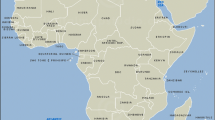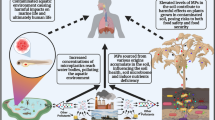Abstract
An abandoned herbicide factory site was used as an example of how planning should be considered for development of the site for transportation use in Dalian, China. Exposure pathways and parameters for three types of transportation use (land for a traffic hub, land for an urban road, and land for a subway) were developed. Twenty-five sampling sites were selected and 38 soil samples were collected in March 2015. Hexachlorobenzene and benzo(a)pyrene which were extracted by Soxhlet extraction and detected by gas chromatography mass spectrometry were the most significant pollutants detected. The maximum concentration of the two pollutants in the surface layer (0–0.5 m) were 0.57 and 3.10 mg/kg, and in the bottom layer (1.0 m) were 2.57 and 3.72 mg/kg, respectively. In this study, risk assessment results based on the established exposure scenario and parameters showed that there was a significant difference in traffic hub land use under specific exposure pathway and common insensitive land use exposure pathways (direct ingestion of soil, dermal contact with soil, and inhalation of soil-derived dust). Commonly considered hexachlorobenzene and benzo(a)pyrene carcinogenic risk values exceeded the maximum acceptable level (10−6) and were found to be 23.9-fold and 189-fold higher than the carcinogenic risk values, respectively. Parameter sensitivity analysis data showed that for transportation use, the two parameters “EFOa” and “OSIRa” were the most significant factors associated with variation of the carcinogenic risk value. For traffic hub land use, urban road land use, and subway land use, the main exposure pathways were through “inhalation of soil vapors outdoors (from surface soil),” “direct ingestion of soil,” and “inhalation of soil vapors indoors (from bottom soil),” which contributed 84.75, 73.00, and 100.00% to the total risk value, respectively.



Similar content being viewed by others
References
BMRIEP (Beijing Municipal Research Institute of Environmental Protection) (2009) Environmental site assessment guideline, DB11/T656–2009. Beijing Municipal Administration of Quality and Technology Supervision, Beijing (in Chinese)
BMAQTS (Beijing Municipal Administration of Quality and Technology Supervision) (2011) Screening levels for soil environmental risk assessment of sites, DB11/T 811–2011. Beijing
CCME(Canadian Council Ministers of the Environment) (2012) National classification system for contaminated sites: guidance document [R/OL]. http://www.ccme.ca assets pdf pn_1403 _ncscs_guidance_e. pdf. 2008
MOHURD(Ministry of Housing and Urban-Rural Development of the People’s Republic of China) (2011) Code for classification of urban land use and planning standards of development land, GB50137–2011. China Architecture & Building Press, Beijing
DEPB (Dalian Environmental Protection Bureau) (2015) Dalian environmental status bulletin. Dalian Environmental Protection Bureau, Dalian http://roll.sohu.com/20160603/n452588458.shtml
DEFRA (Department for Environment, Food and Rural Affairs) (2006) Assessing risk from contaminated land contamination: aproportionate approach [S]. Department for Environment, Food and Rural Affairs, London
Deng H, Chen G (2014) Health risk assessment for typical and abandoned chromium-contaminated sites. Chin J Geochem 33:382–386. https://doi.org/10.1007/s11631-014-0701-3
Dmitry PB, Chengyun L, Hongmei L, Jishun L, Xinjian Z, Xiangfeng C, Hetong Y (2016) Occurrence, diversity and community structure of culturable atrazine degraders in industrial and agricultural soils exposed to the herbicide in Shandong Province, P.R. China. BMC Microbiology 16:265. https://doi.org/10.1186/s12866-016-0868-3
Eleonora W, Dawn I, Rafal K, Jerzy S (2002) Human health risk assessment case study: an abandoned metal smelter site in Poland. Chemosphere 47:507–515
EA (Environment Agency in England and Wales) (2009) Updated technical background to the CLEA model [r]. Science Report SC050021 SR3. Environment Agency, Bristol
Edgar Q, Alexandre R, Roberto M, Alejandro L, Wilfredo B, Aimee C, Carlos MO, Ernesto B, Carlos E, Dina L (2017) Heavy metals and pesticide exposure from agricultural activities and former agrochemical factory in a Salvadoran rural community. Environ Sci Pollut Res 24:1662–1676. https://doi.org/10.1007/s11356-016-7899-z
Ellenl A, Brenda SP, Todd AA, Joel RC (2000) Degradation of an atrazine and metolachlor herbicide mixture in pesticide-contaminated soils from two agrochemical dealerships in Iowa. Water Air Soil Pollut 119:75–90. https://doi.org/10.1023/A:1005165603963
Swartjes FA (2015) Human health risk assessment related to contaminated land: state of the art. Environ Geochem Health 37:651–673. https://doi.org/10.1007/s10653-015-9693-0
Fei L, Jinhui H, Guangming Z, Wenchu L, Xiaolong H, Bin H, Yanling G, Lixiu S, Xiaoxiao H, Yan H (2015) Toxic metals in topsoil under different land uses from Xiandao District, middle China: distribution, relationship with soil characteristics, and health risk assessment. Environ Sci Pollut Res 22:12261–12275. https://doi.org/10.1007/s11356-015-4425-7
Ihedioha JN, Ukoha PO, Ekere NR (2016) Ecological and human health risk assessment of heavy metalcontamination in soil of a municipal solid waste dump in Uyo. Nigeria Environ Geochem Health. https://doi.org/10.1007/s10653-016-9830-4
Lin W, Xiangfen C, Hongguang C, Fei C, Jiantong W, Xinyi Z, Chunye L, Xiao P (2015) A review of soil cadmium contamination in China including a health risk assessment. Environ Sci Pollut Res 22:16441–16452. https://doi.org/10.1007/s11356-015-5273-1
MEP (Ministry of Environmental Protection of the People’s Republic of China) (2014) Technical guidelines for risk assessment of contaminated sites, HJ 25.3–2014. China Environmental Science Press, Beijing
RAIS (Risk Assessment Information System) (2014) US Department of Energies, Oak Ridge Operations Office http://rais.ornl.gov/
Sarva MP, Sharifah NS, Ahmad ZA (2015) Health risk assessment of heavy metal exposure in urban soil from Seri Kembangan (Malaysia). Arab J Geosci 8:9753–9761. https://doi.org/10.1007/s12517-015-1895-3
Suzhen C, Xiaoli D, Xiuge Z, Jin M (2014) Health risks from the exposure of children to As, Se, Pb and other heavy metals near the largest coking plant in China. Sci Total Environ 472:1001–1009
USEPA (United States Environmental Protection Agency) (1989) Risk assessment guidance for superfund: VolumeI:Human health evaluation manual (Part A). OSWER--9285.6-03. Office of Solid Waste and Emergency Response, Washington
USEPA (United States Environmental Protection Agency) (1991) Risk assessment guidance for superfund, Volume I:Human health evaluation manual (Part B, Development of risk-based preliminary remediation goals). Office of Solid Waste and Emergency Response, Washington
USEPA (United States Environmental Protection Agency) (1992) Dermal exposure assessment: principles and applications [R]. Office of Solid Waste andEmergency Response, Washington
USEPA (United States Environmental Protection Agency) (1996) Soil screening guidance: user’s guide [R]. Office of Solid Waste and Emergency Response, Washington
USEPA (United States Environmental Protection Agency) (2002) Supplemental guidance for developing soil screening levels for superfund sites. OSWER 9355.4-24. Office of Solid Waste and Emergency Response, Washington
Wang ZX, Guo QW, Yang ZH, Sun GQ, Ye WS, Hu XB (2016) A land use-based spatial analysis method for human health risk assessment of heavy metals in soil and its application in Zhuzhou City. Hunan Province, China J Cent South Univ 23:1915–1923. https://doi.org/10.1007/s11771-016-3247-1
Wei H, Le Z, Yue L, Lihong Z, Shuxian L, Lan J, Su D (2015) Distribution and health risk assessment of polycyclic aromatic hydrocarbons in soil from a typical contaminated urban coking sites in Shenyang City. Bull Environ Contam Toxicol 95:815–821. https://doi.org/10.1007/s00128-015-1677-3
Xiuying Z, Taiyang Z, Dongmei C, Min C, Lei L, Xiaomin Z, Xinhui L (2016) Assessment of arsenic (As) occurrence in arable soil and its related health risk in China. Environ Geochem Health 38:691–702. https://doi.org/10.1007/s10653-015-9751-7
Yuanyuan C, Paul C (2009) Generic assessment criteria for human risk assessment of potentially contaminated land in China. Sci Total Environ 408:324–339
Zhao XG, Duan XL (2014) Highlights of the Chinese exposure factors handbook (adults). China Environmental Science Press, Beijing
Zhang L, Jiang L, Zhong MS (2015) Risk assessment based on planning scenarios for a large-scale contaminated site. Res Environ Sci 28:788–795
Zhong MS, Jiang L, Yao J, Xia TX, Zhu XY, Han D, Zhang LN (2013) Case study on health risk assessment based on site-specific conceptual model. Environ Sci 34:647–652. 10.13227/j.hjkx.2013.02.034
Author information
Authors and Affiliations
Corresponding author
Additional information
Responsible editor: Philippe Garrigues
Rights and permissions
About this article
Cite this article
Ji, N., Zhang, S., Zhang, Y. et al. Health risk assessment of an abandoned herbicide factory site for transportation use in Dalian, China. Environ Sci Pollut Res 24, 24572–24583 (2017). https://doi.org/10.1007/s11356-017-0156-2
Received:
Accepted:
Published:
Issue Date:
DOI: https://doi.org/10.1007/s11356-017-0156-2




